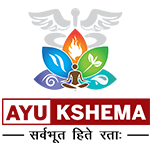
YOGA
The word Yoga is derived from the Sanskrit root – Yuj means joining or yoking. The ultimate goal of Yoga is the union of individual self (Jeevatman) with supreme self (paramatman). Yoga is as old as civilization and it has a very old history. According to Indian mythology Lord Shiva is the founder of Yoga. It is believed that Shiva taught this sacred knowledge to Goddess Parvati.
The first archeological evidence of existence is found in stone seals excavated from the Indus Valley. The stone seals depict figures performing Yoga postures. Yoga was a special feature of Indus valley civilization (3000 BC). The phallic symbols, seals and the idols of mother Goddess suggest a type of Tantra Yoga. The word Yoga is frequently referred in all the four Vedas. Moksha is the ultimate goal of Yoga, which is explained in the Upanishads. The Upanishads have revealed the highest Yogic state (turiyavastha) of an individual. The Boudha Yoga (arya ashtangika marga) of Buddhism, Saptanga Yoga of Jainism are also the pillar of Yoga tradition and have been greatly contributed to the development of Yoga. The epics – Ramayana and Mahabharatha have numerous references about Yoga. The Bhagavdgita – the quintessence of Mahabharatha is considered as a classical treatise on Yoga. Shad-Darshanas are the important sources of Yoga. They are Nyaya, Vaisheshika, Sankhya, Yoga, Poorva Mimamsa & Uttara Mimasa (Vedanta). The Sankhya Darshana of Kapila has become the source for Yoga Darshana.
Maharshi Patanjali (200 BC) has codified the various scattered references about Yoga in the form of sutras (verses) – popularly known as Patanjali Yoga Sutras. His path of Yoga is known as Ashtanga Yoga and has become the source book to all the existing schools of Yoga. The Acharyatrayas of vedantic schools – Shankara, Madhwa and Ramanuja have also made notable contribution to the development of Yoga. Tantra/ Puranic age (500 -1500 CD) witnessed the great cultural revolution of tantrism. Tantra Yoga has contributed in its own way to the development of systems of Yoga. Natha cult had contributed for the development of Hatha Yoga tradition. These traditions had developed extra ordinary psycho-techniques, which evolved and integrated the highest meta-physical ideas with practical belief and practices. Subsequently, the Hatha Yoga school of thought became dominant. The Hatha Yoga has become more popular because of its efficacy in solving the day to day health problems. The famous scriptures of Hatha Yoga are – Hatha Yoga Pradeepika, Gheranda Samhita, Hatha Rathnavali, Shiva Samhita, Hatha Tatwa Kaumudi, Sidha Sidhanta Paddathi etc. Great Gurus, schools and sages of Bhakti Yoga tradition have also contributed to the development of Yoga during this period.
The advent of modern Yoga can be traced back to the late 19th century and early 20th century and Gurus such as Sri Ramakrishna Paramahamsa, Swami Vivekananda, Maharshi Aurobindo, Ramana Maharshi etc. who evolved Yoga for the common man and contributed to the development of Yoga.
Although the system of Yoga is spiritual in nature, but the principles and methods prescribed in Yoga especially the Hatha Yoga techniques have elaborately deliberated the health benefits of Yoga. Further, the large amount of data available on fundamental & clinical research of Yoga has undoubtedly proved the efficacious effect of Yoga both on physiological and pathological conditions. Based on this, the system of Yoga has been now considered as one of the Indian systems of medicine. The Yoga is being practiced as one of the best alternative methods of health care and even the modern medicine is adopting Yoga, besides the main stream medical care in many of the disease conditions. Furthermore, the Yogic techniques are widely used for the management of stress and tension, which are the main causes of many of the non-communicable diseases. Today, Yoga is a house-hold name and is being practiced world over irrespective of caste, creed, religion and region.
